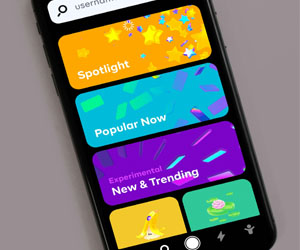



In a rapidly changing world, businesses must evolve to stay competitive and relevant. Transforming your business approach is not just a luxury; it's a necessity for long-term success. Whether you're a seasoned entrepreneur or just starting, the ability to adapt and innovate is key to navigating the dynamic landscape of the modern business world. In this article, we'll explore why and how transforming your business approach can lead to growth and resilience.
Why Transform Your Business Approach?
Adapt To Market Changes: Markets shift, consumer preferences change, and technology advances at an astonishing pace. To remain relevant, your business must be agile enough to adapt to these changes promptly.
Stay Competitive: Competition is fierce in almost every industry. Transforming your approach allows you to differentiate your business and gain a competitive edge.
Innovate And Improve: Transformation often involves innovation. Embracing new technologies, processes, and ideas can lead to improvements in efficiency, quality, and customer satisfaction.
Risk Mitigation: By diversifying your approach and adapting to new challenges, you can mitigate risks and increase your business's resilience in the face of unforeseen obstacles.
How To Transform Your Business Approach
Embrace Technology: Technology is at the heart of modern business transformation. Explore how emerging technologies, like artificial intelligence, automation, and data analytics, can enhance your operations, streamline processes, and offer new opportunities.
Customer-Centric Focus: Shift your approach to be more customer-centric. Listen to your customers, gather their feedback, and use it to tailor your products or services to their needs and preferences.
Data-Driven Decision-Making: Data is a goldmine of insights. Implement data-driven decision-making processes, utilizing analytics to make informed choices that drive business growth.
Agile Leadership: Cultivate a leadership culture that is agile and adaptable. Leaders who encourage creativity and innovation among their teams are more likely to succeed in transforming their businesses.
Diversify Revenue Streams: Relying on a single revenue stream can be risky. Explore opportunities to diversify your income sources, whether through additional products, services, or strategic partnerships.
Collaboration And Networking: Building strong connections within your industry and beyond can lead to opportunities for growth and transformation. Collaborate with other businesses, attend industry events, and engage in professional networking to stay updated on industry trends.
Employee Empowerment: Your employees are valuable assets in the transformation process. Encourage and empower them to share their ideas and feedback. Their on-the-ground insights can be instrumental in your business's evolution.
Constant Learning: The business world is ever-evolving. Stay informed by reading industry publications, attending workshops, and taking online courses. Continual learning is essential for transformation.
Risk-Taking: Transformation often involves calculated risks. Don't be afraid to take chances, but ensure you've assessed the potential rewards and risks before making significant changes.
Strategic Planning: Create a comprehensive transformation plan that outlines your goals, timelines, and key performance indicators. Regularly review and adjust the plan as needed.
Transforming your business approach is not just an option; it's a strategic imperative in today's fast-paced and competitive business environment. By embracing technology, adopting a customer-centric focus, making data-driven decisions, fostering agile leadership, diversifying revenue streams, collaborating and networking, empowering employees, committing to continuous learning, taking calculated risks, and maintaining a clear transformation plan, you can position your business for long-term success and growth. Business transformation isn't a one-time event but an ongoing journey of adaptation and innovation.
The Evolution Of The Pocket Revolution
 1. 5G Connectivity
1. 5G Connectivity
One of the most anticipated advancements in mobile technology is the deployment of 5G networks. 5G, which stands for fifth-generation wireless technology, offers unprecedented speed and bandwidth, enabling faster download and upload speeds, low latency, and the ability to connect a vast number of devices simultaneously. This advancement is a game-changer for mobile communication, paving the way for innovations in fields like augmented reality (AR), virtual reality (VR), telemedicine, and autonomous vehicles.
2. Foldable Phones
The introduction of foldable smartphones represents a revolutionary step in mobile device design. These devices offer the flexibility of a tablet and the portability of a smartphone, allowing users to switch between different form factors. Foldable phones are challenging traditional notions of screen size and usability, opening up new possibilities for multitasking, content consumption, and user interaction.
 2. Nurturing Unconventional Skills
2. Nurturing Unconventional Skills
While technical and industry-specific skills are vital, unconventional skills can make a substantial difference. Abilities like creativity, emotional intelligence, adaptability, and lateral thinking can be instrumental in navigating challenges, fostering innovation, and building strong relationships with employees and clients. These skills are often overlooked but can be key to achieving success.
3. Building A Diverse Network
Networking is a well-known avenue to business success, but diversifying your network is often underestimated. Interacting with people from different backgrounds, industries, and walks of life can provide fresh perspectives, new opportunities, and unexpected collaborations.






Reaching Your Audience Proactively
 Television And Radio Advertising: TV and radio ads have been long-standing staples of outbound marketing. They offer a broad reach, allowing businesses to convey their messages to a large audience simultaneously.
Television And Radio Advertising: TV and radio ads have been long-standing staples of outbound marketing. They offer a broad reach, allowing businesses to convey their messages to a large audience simultaneously.
Print Advertising: This includes newspaper and magazine advertisements. While print circulation has declined in the digital age, it remains a relevant channel for reaching specific demographics.
Direct Mail: Sending physical promotional materials, such as brochures or postcards, to a targeted mailing list is a form of outbound marketing. Direct mail can be highly effective when well-executed.
Cold Calling: This involves reaching out to potential customers via phone, introducing products or services, and seeking to initiate sales conversations.
Email Marketing: Although it can also fall under inbound marketing, email marketing campaigns that send promotional messages to a purchased or rented email list are considered outbound. These messages aim to generate leads or conversions.
Trade Shows And Events: Participating in trade shows and industry events provides opportunities to showcase products and services to a relevant audience.
 6. Email Marketing: Email marketing is a direct and highly effective means of communication. Use it to nurture leads, convert prospects into customers, and maintain relationships with existing clients. Personalized email campaigns and relevant content can significantly boost engagement.
6. Email Marketing: Email marketing is a direct and highly effective means of communication. Use it to nurture leads, convert prospects into customers, and maintain relationships with existing clients. Personalized email campaigns and relevant content can significantly boost engagement.
7. Paid Advertising (PPC): Pay-per-click advertising provides immediate visibility and control over your budget. You only pay when someone clicks on your ad. This makes it an effective choice for targeted advertising and promotions.
8. Analytics And Data: Data-driven decision-making is at the heart of internet marketing. Utilize analytics tools to monitor the performance of your marketing campaigns. Analyze data to understand what's working and what needs adjustment.
9. Mobile Optimization: Given the proliferation of mobile devices, ensure your website and marketing materials are optimized for mobile. A seamless mobile experience is crucial for retaining users.
10. Continuous Learning: The world of internet marketing is in a state of perpetual flux. Staying up to date with the latest trends and innovations is critical. Join online communities, follow industry blogs, and participate in webinars and courses to enhance your skills.
Navigating The Mobile-First Landscape
 3. SMS Marketing
3. SMS Marketing
Short Message Service (SMS) marketing is a direct and immediate way to connect with customers. Sending promotional offers, updates, and critical information via text messages can be highly effective. It's important to obtain explicit consent and provide easy opt-out options to respect users' privacy.
4. Social Media Marketing
Leverage social media platforms to connect with mobile users. Facebook, Instagram, Twitter, and LinkedIn are popular platforms with a substantial mobile user base. Create engaging content, run targeted ads, and utilize mobile-specific features like Instagram Stories to engage with your audience.
5. Location-Based Marketing
Location-based marketing uses the GPS and location data of mobile devices to deliver relevant and timely messages to users based on their geographic location. Techniques like geofencing can be employed to send notifications or offers to users when they enter specific areas, such as near your physical store.
6. Mobile SEO
Optimize your website and content for mobile search engines. Mobile SEO ensures that your site ranks well in mobile search results. Factors like page load speed, mobile-friendly design, and local SEO optimization play a significant role in mobile search rankings.
7. Video Marketing
Video content is highly engaging on mobile devices. Create compelling video content that is optimized for mobile consumption. Platforms like YouTube, TikTok, and Instagram are ideal for sharing video content and reaching a broad audience.